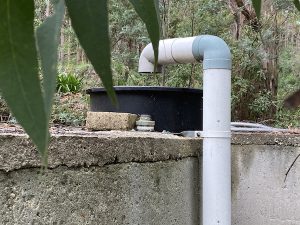Water Tanks: Tap in to Winter Rains
As winter approaches and wet weather follows, now is the time for Victorians to consider collecting one of nature’s free and precious resources – rain.
Collecting water via rainwater tanks can save you money on water bills, while offering a sustainable and environmentally friendly water saving solution.
With rainwater tanks available in a range of sizes, it is important to consider whether your tank’s installation will require a building permit.
Water supply connections must be carried out by a licensed and registered plumber.
Victorian Building Authority (VBA) State Building Surveyor Andrew Cialini says safety and compliance with local council regulations is important when installing a rainwater tank.
“It is important to check with your council to find out if a planning permit is required to install a rainwater tank at your property,” Mr Cialini said.
“A registered and licensed plumber will be able to advise you on the best size, type and location for a rainwater tank on your property.”
It is essential to secure rainwater tanks on appropriate supporting bases, while water to and from the tank and stormwater drain must be connected by a licensed or registered plumber.
Mr Cialini said homeowners should consider the potential dangers of a rainwater tank if it toppled over.
“A 5000 litre water tank weighs more than five tonnes, so it’s important that compliance safety standards are met and licensed professionals are engaged for tank installation and maintenance.”
To find a licensed and registered plumber in your area or for more information about rainwater tanks, contact the Victorian Building Authority or visit your local water retailer.
What to do when installing a rainwater tank:
- A licensed and registered plumber must be engaged to connect the roof catchment to the rainwater tank and the tank overflow to the stormwater drain.
- Jobs valued at $750 or more, including the tank, fittings and labour, require the plumber to issue a compliance certificate.
- Australian standards and guidelines apply to the design, material, manufacture and installation of rainwater tanks. A licensed and registered plumber can help identify which tanks suit your needs.
- Overflows or discharge pipes from roof mounted evaporative air conditioners should not be allowed to discharge onto your roof catchment areas for your tank, due to water quality issues.
- Keep your roof and gutters clean and flush your tank every two or three years.
A building permit is not required for a free standing water tank where it is located externally.If a free standing water tank is located within the building, a building permit may be required due to the structural implications from the weight of the filled tank.
Visit the VBA website for more water saving tips.

